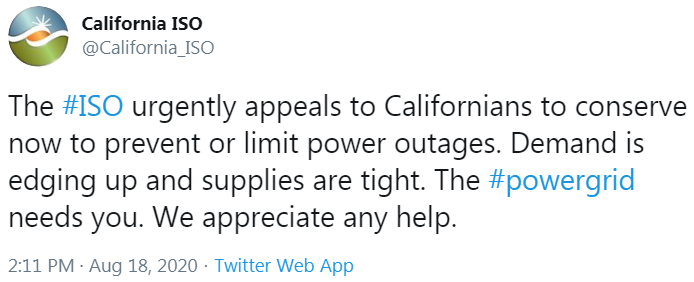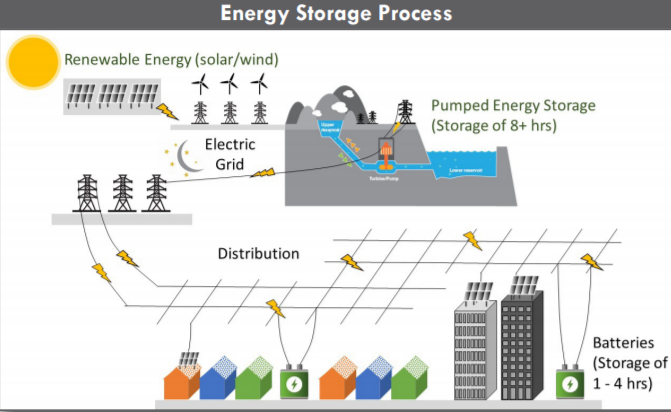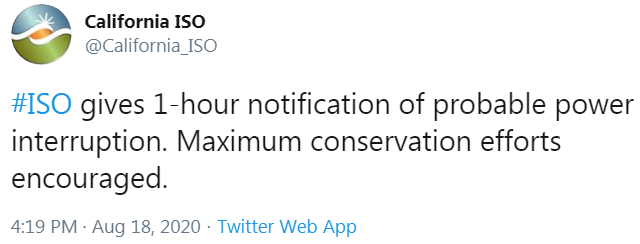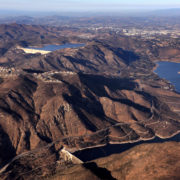Water agencies across San Diego County are doing their part to stabilize the state’s power grid during this week’s heatwave by generating hydropower and altering operations to trim electricity demands – and they are offering long-term solutions to reduce future energy shortages.
The California Independent System Operator issued a statewide Flex Alert from Sunday through Wednesday, calling for reduced electricity use in the afternoon and evening to limit power outages. Blackouts could affect hundreds of thousands of San Diego County residents, if extreme heat persists.

Producing and conserving power during energy shortages
At Lake Hodges, the Water Authority is running its pumped energy storage facility to meet peak demands. As water flows down the pipeline from Olivenhain Reservoir into Lake Hodges, it generates up to 40 megawatts of energy on demand, helping to manage temporary peak electrical demands or unplanned outages. Then, the water is pumped back to Olivenhain Reservoir when power demands are low to restart the cycle.
In addition, water agencies are taking numerous actions to conserve energy. For the Water Authority, the strategy includes temporarily reducing drinking water production at the Claude “Bud” Lewis Carlsbad Desalination Plant in collaboration with Poseidon Water.
The Carlsbad Desalination Plant is the largest, most technologically advanced and energy-efficient desalination plant in the nation, and it has produced more than 62 billion gallons of drinking water for San Diego County since it began operations in December 2015.
Starting Monday, the plant ramped down operations, making an additional 8 megawatts of power available for other uses. If more load reductions are necessary over the next several days, additional curtailment may be considered at the plant. The power provided by the plant could help offset current energy shortages.
“This partnership by the Water Authority and Poseidon is another reminder of the value of the cutting-edge technology and local control at the Carlsbad plant,” said Jim Madaffer, chair of the Water Authority’s Board of Directors. “Operations are flexible and the technology is nimble, so production can be ramped up and down in response to local needs.”

Water agencies respond to energy shortages
In addition, local and regional water agencies are temporarily shutting down or reducing flows at pump stations and turning off HVAC systems in the afternoons. Some agencies also have the ability to convert to less energy-intensive treatment, for instance, by replacing ozone with chlorine.
Local water agencies also are tapping their significant backup power generation capacity – at their own expense – to ease the strain on the energy grid, following Governor Newsom’s executive order that suspends some regulatory requirements for those units during this emergency event. Local agencies are also looking to work with the administration to ensure that their backup generation capacity can be used proactively to help avoid future energy shortages.

Pumped energy storage facilities are part of an integrated and sustainable energy system that
includes the production, storage and distribution of clean energy.
Environmentally friendly pumped storage project proposed
Beyond the immediate concerns, this week’s heat wave has highlighted the need to increase large-scale energy storage as the state moves toward a goal of 100% renewable energy by 2045. Put simply, the sun doesn’t always shine and the wind doesn’t always blow enough to meet demands, so the state needs more capacity to store peak renewable energy production for peak demand periods.
The Water Authority has proposed building a large-scale pumped storage project at the San Vicente Reservoir near Lakeside. Pumped energy storage projects are designed to store excess renewable energy from solar and wind when it’s available, and then discharge that energy when energy demands increase and renewable energy is scarce.
Solutions for long-term energy challenge
A 2019 white paper highlighted the importance of pumped energy storage to California’s future.
“Our current situation is the direct result insufficient planning; the state clearly needs additional energy storage now and will need much more in the future,” said Gary Bousquet, energy program manager for the Water Authority. “Environmentally friendly pumped storage projects should be started immediately to address this shortfall, or power reliability will get significantly worse. The San Vicente project can be started now at no cost to taxpayers – users only pay when the project comes online.”








